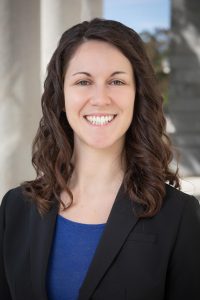2020 ASHEcon Virtual Mentoring Program
By: Ellen Meara
 With so much distance from each other in 2020, early career health economists face steep challenges to networking with colleagues outside their home institutions. To help address this need, ASHEcon created the 2020 Virtual Mentoring Program. When ASHEcon wrote to its members to solicit mentors and mentees, the response was strong – in October, 148 mentees were matched with 108 mentors based on mentor topic areas and mentee requests.
With so much distance from each other in 2020, early career health economists face steep challenges to networking with colleagues outside their home institutions. To help address this need, ASHEcon created the 2020 Virtual Mentoring Program. When ASHEcon wrote to its members to solicit mentors and mentees, the response was strong – in October, 148 mentees were matched with 108 mentors based on mentor topic areas and mentee requests.
Who reached out to help and get advice? Our mentees are current students or graduates of nearly 70 unique academic institutions across the U.S., Canada and Europe, and they include PhD students and early career PhDs. Our mentors also bring diverse professional, geographic and personal backgrounds. Mentors include relatively new PhDs, rising stars, recently tenured faculty, leaders at non-academic institutions, and senior faculty serving in leadership roles as journal editors, department chairs, center directors and deans.
The virtual mentoring program was intended to vary with needs of the mentees, and early feedback from participants confirmed a wide range of needs, often addressed through regular contact. Examples of mentoring goals addressed include career planning, reviewing dissertation papers, help with department politics, converting ideas into high-impact publications, and connecting mentees to other people. If you are a current mentee and you are willing to share a bit about your mentoring experience for the spring ASHEcon newsletter, please reach out to info@ashecon.org. Thank you to our mentors and mentees for contributing to the profession and strengthening the ASHEcon community.
Ellen Meara is a Professor of Health Economics and Policy at Harvard University and a member of ASHEcon’s Board of Directors.
Webinar on Smartphone Location Data
By: Martin Andersen
 The advent of smartphone technology has provided researchers with a new resource to understand health and other policies in the form of cellular mobility data. Last December, Kosali Simon and I organized a webinar (watch the full video here) to assist researchers with understanding these data and accessing the data. We summarized the major features of the offerings from SafeGraph, PlaceIQ, and UberMedia(three leading data providers) here.
The advent of smartphone technology has provided researchers with a new resource to understand health and other policies in the form of cellular mobility data. Last December, Kosali Simon and I organized a webinar (watch the full video here) to assist researchers with understanding these data and accessing the data. We summarized the major features of the offerings from SafeGraph, PlaceIQ, and UberMedia(three leading data providers) here.
Cellular mobility data come from GPS location data that a smartphone or similar device collects either to provide in-app location-related information or to serve location-specific advertising. In-app data come from software development kits that vendors provide to developers in exchange for location data. As a result, in-app data tends to be of higher quality than advertising data because the vendor controls the data collection process. However, we, as users, rarely, if ever, know the precise sources of data used by any particular vendor.
For the most part, researchers have used aggregated data provided by vendors such as SafeGraph, PlaceIQ, and UberMedia. However, there are also device-level datasets available for research (X-mode, UberMedia, and others) which allow following the movements of individual devices across space and over time.
Given that these data exist, what can we learn from them? How can cellular device data help health economists, particularly beyond the COVID-19 pandemic?
Cellphone data allows us to provide rapid answers to policy-relevant questions. For example, Sylvia Bryan, David Slusky, and I used cellular data to study the effect of state surgical abortion bans during the COVID-19 pandemic. This study could not have been done without cellular data since other data either would not have been available or would not have had appropriate temporal or geographic resolution to identify treated clinics on a daily basis.
Over time, I am confident that we will discuss more uses for these data in health and other areas.
Martin Andersen is an Assistant Professor of Economics as the University of North Carolina at Greensboro.
ASSA Session on Health Care Markets and Public Policy
By: Caitlin Carroll
On January 5, 2020, ASHEcon hosted a session on  health care markets and public policy at the ASSA annual meeting. The panel covered core topics in health economics, including how to price health care services, physician earnings and health insurance take-up.
health care markets and public policy at the ASSA annual meeting. The panel covered core topics in health economics, including how to price health care services, physician earnings and health insurance take-up.
Maggie Shi (with Gross, Sacarny and Silver) kicked off the session by discussing how hospitals respond to price changes. The authors study a 2008 policy change in which Medicare overhauled their DRG rates, showing that hospital care follows a traditional, upward sloping supply curve.
Maria Polyakova (with Gottlieb, Rinz, Shiplett, and Udalova) presented work on government reimbursement changes in a different context: physician earnings. Using a novel dataset of physician tax records, the authors show that physicians earn more than survey data would suggest, in large part due to business income. Public policy plays an important role in physician earnings; half of government reimbursement changes are passed through to physician income.
Amanda Starc (with Ding and Duggan) discussed what happens when Medicare moves away from administered prices and tries to harness market forces. The authors study the effects of competitive bidding for durable medical equipment in the Medicare program, showing evidence of a stunning 45% decrease in prices.
Finally, Mark Shepard (with Wagner) presented work on take-up of health insurance, showing that automatic enrollment removes an “ordeal” to program take-up and results in large increases in enrollment. The authors present evidence that automatic enrollment is expensive but cost-effective relative to premium subsidies.
Caitlin Carroll is an Assistant Professor of Health Policy and Management at the University of Minnesota.
